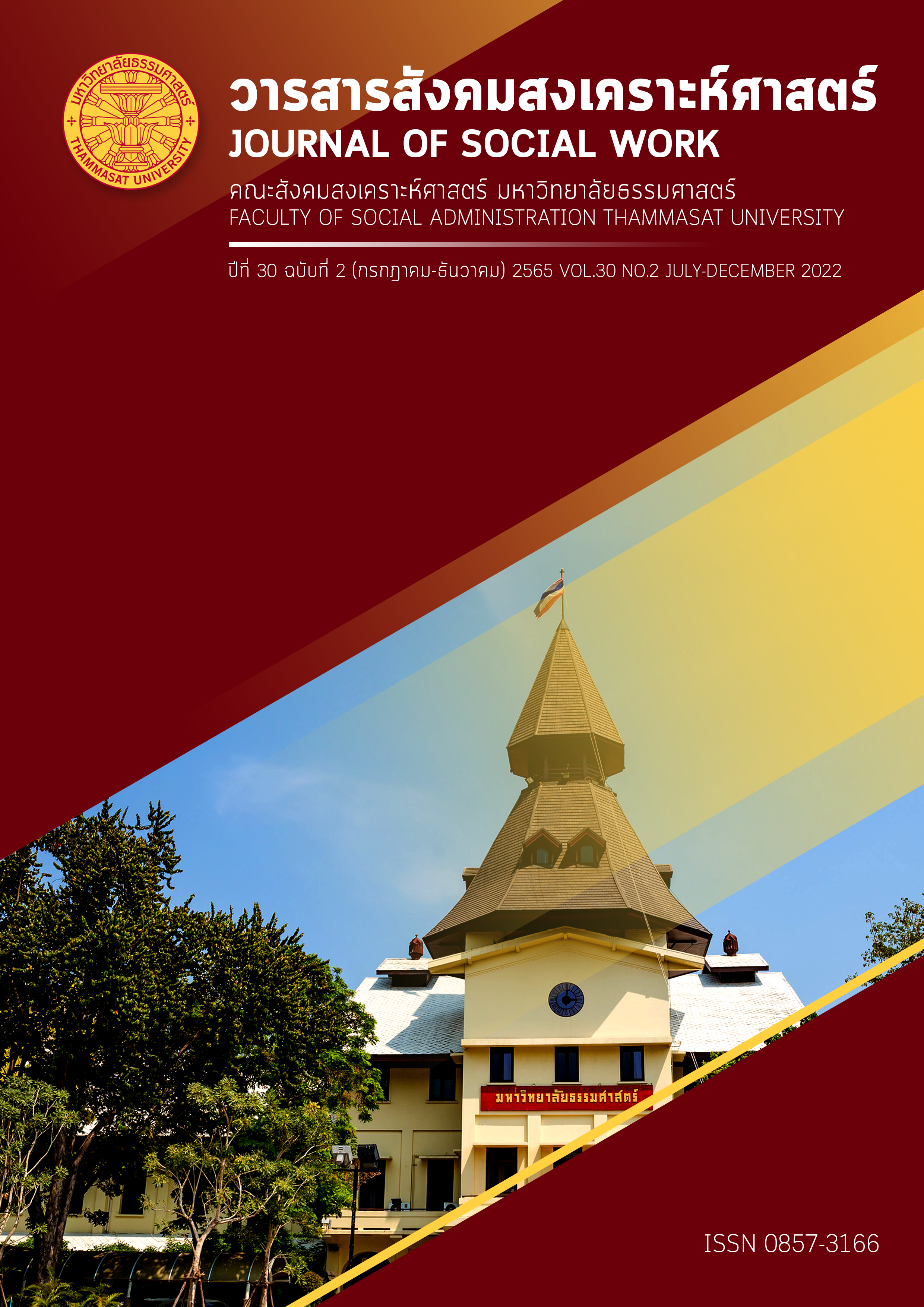Government Applications: Quality and Public Service in the Digital Age
Keywords:
Government app, User experience, Quality of digital applicationAbstract
The growth of smartphone usage due to its functionalities and convenience of application usability is one of the many important reasons for the existence of the public service called “Government app” This promotion supported by the Digital Government Agency (public organization) has brought about 299 government apps and a growing interest in public service quality on the digital platform. This paper aims to analyze the service quality related to the application usages by a group of experienced users deploying qualitative methodology through 81 informants who have skills related to smartphone applications and who display a voluntary interest in the assessment of such apps. The app’s evaluation is undertaken via Google Sheet’s cloud system for text analysis, user’s satisfaction rating, and content analysis at the domain app.go.th, in supplementing the user’s analytics in order to reach the application quality service representatives. According to the study, the quality of government apps service is limited. Users demonstrate higher expectations of apps than the service capabilities currently offered. These restrictions relate to the content of the app’s service, convenience and ease of use, which, in turn, present an opportunity for government agencies to subsequently improve their public services in the digital age in order to meet application development quality standards.
References
ประกาศสำนักนายกรัฐมนตรี. (18 เมษายน 2562). เรื่องการประกาศแผนแม่บทภายใต้ยุทธศาสตร์ชาติ (พ.ศ. 2561-2580). ราชกิจจานุเบกษา. เล่ม 136.
พระราชกฤษฎีกาจัดตั้งสํานักงานพัฒนารัฐบาลดิจิทัล (องค์การมหาชน). (13 พฤษภาคม 2561). ราชกิจจานุเบกษา. เล่ม 135.
สำนักงานรัฐบาลอิเล็กทรอนิกส์. (2558). มาตรฐานแอปพลิเคชันภาครัฐสำหรับอุปกรณ์เคลื่อนที่ (Government Mobile Application Standard Version 1.0). กรุงเทพฯ: พี.เอ็ม.มีเดีย พริ้นท์ จำกัด. สืบค้นจาก https://www.dga.or.th/wp-content/uploads/2021/02/Gov-Moblie-App-Std-1.pdf
Alomari, M. K., Sandhu, K., & Woods, P. (2014). Exploring citizen perceptions of barriers to e-government adoption in a developing country. Transforming Government: People, Process and Policy, 8(1), 131-150.
Chen, A. N., Downey, J. P., McGaughey, R. E., & Jin, K. (2016). Seniors and information technology in China. International Journal of Human-Computer Interaction, 32(2), 132-142.
Eom, S., & Kim, J. H. (2014). The adoption of public smartphone applications in Korea: Empirical analysis on maturity level and influential factors. Government Information Quarterly, 31, S26-S36.
Fuentes-Enriquez, R., & Rojas-Romero, Y. (2013). Developing accountability, transparency and government efficiency through mobile apps: The case of Mexico, In Janowski, T., Holm, J., and Estevez, E. (Eds), Proceedings of the 7th International Conference on Theory and Practice of Electronic Governance (ICEGOV ’13), ACM Press, Seoul, 313-316.
Hootsuite, & We Are Social. (2021). Digital 2021 Global Digital Overview. Retrieved from https://datareportal.com/reports/digital-2021-thailand
Hsiao, C., Chang, J., & Tang, K. (2016). Exploring the influential factors in continuance usage of mobile social apps: Satisfaction, habit, and customer value perspectives. Telematics and informatics, 33(2), 342-355.
Ingrams, A. (2015). Mobile phones, smartphones, and the transformation of civic behavior through mobile information and connectivity. Government Information Quarterly, 32(4), 506-515.
Lee, M., Almirall, E., & Wareham, J. (2016). Open data and civic apps: first-generation failures, second-generation improvements. Communications of the ACM, 59(1), 82-89.
Lorenzi, D., Vaidya, J., Chun, S., Shafiq, B., & Atluri, V. (2014). Enhancing the government service experience through QR codes on mobile platforms. Government Information Quarterly, 31(1), 6-16.
Oghuma, A. P., Park, M. C., & Rho, J. J. (2012). Adoption of m-Government service initiative in developing countries: a citizen-centric public service delivery perspective. (19th).
ITS Biennial Conference 2012: Moving Forward with Future Technologies: Opening a Platform for All, Bangkok, November 18-21, 1.
Sung, S. J. (2011). How can we use mobile apps for disaster communications in Taiwan: Problems and possible practice. Proceedings of the 8th Asia-Pacific Regional International Telecommunications Society Conference (ITS ’11), ECONSTOR, Taipei, 1-15.
Thomas, J. C. (1982). Citizen-initiated contacts with government agencies: a test of three theories. American Journal of Political Science, 26(3), 504-522.
Thomas, J. C., & Streib, G. (2003). The new face of government: citizen-initiated contacts in the era of e-government. Journal of Public Administration Research and Theory: J-PART, 13(1), 83-102.
Downloads
Published
How to Cite
Issue
Section
License
Copyright (c) 2022 Journal of Social Work

This work is licensed under a Creative Commons Attribution-NonCommercial-NoDerivatives 4.0 International License.
The manuscripts published in the Social Work Journal is the copyright of the Social Work Journal, Thammasat University
Any article or opinion appeared in the Social Work Journal will solely be under the responsibility of the author The Faculty of Social Administration, Thammasat University and the editors do not need to reach in agreement or hold any responsibility.



